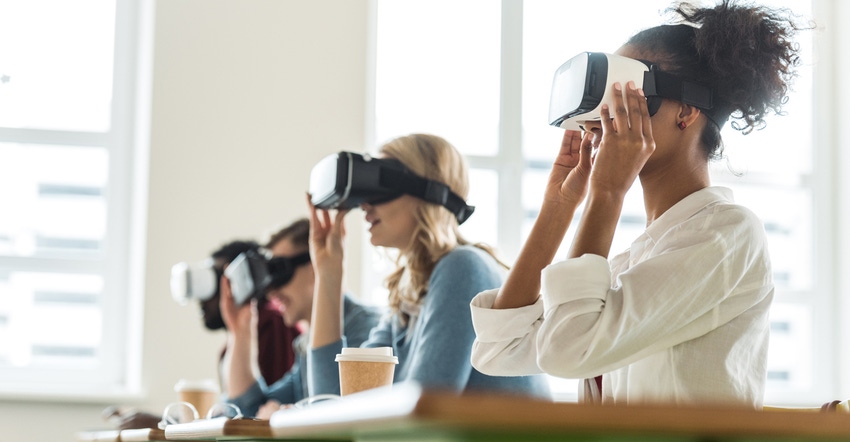December 1, 2020

The advent of COVID-19 has taken students out of the classroom, but for middle school and high-school students in Oregon and Washington, that doesn’t mean a lack of educational opportunity. Instead, students in those states will be able to explore agriculture through immersive experiences, including virtual reality and online activities.
The program is made possible through a $1 million rapid-response grant from USDA and is one of eight projects nationwide funded to address student educational needs.
This is no series of Zoom meetings with the teacher. Oregon State University's Precollege Programs and the SMILE (Science and Math Investigative Learning Experiences) program are partnering with the OSU Extension Service 4-H Youth Development Program to implement an innovative Agriculture Distance Education Toolkit.
A key will be the use of virtual reality, which is a computer-generated simulation of an interactive, 3D environment. VR experiences usually require use of headsets, hand-held controllers and other electronic tools that allow a person to interact with the simulation. For this aspect of the project, OSU will partner with TimeLooper, a company that creates VR field trips to natural and historic sites. The experiences will then be accessible through apps and VR kits.
From idea to execution
The apps and kits will be distributed through the project partner’s networks and platforms, which will result in rapid, accessible, immersive and innovative distance ag education for an estimated 20,000 students, 100 educators and 250 trained volunteers from rural and underserved communities in Oregon and Washington.
The goals are to develop agricultural literacy among youth; increase access for youth, educators and 4-H volunteers to immersive agriculture curriculum through virtual reality platforms; and build capacity for future regional efforts.
As Susan Rowe, project director and research, grants and engagement manager for Precollege Programs and the SMILE program, notes, “The current COVID-19 crisis is promoting rapid institutional and cultural transformations and threatening educational systems with tremendous uncertainty, while stretching barriers to inclusive and equitable education for all.”
Rowe adds that the project is a long-term commitment to use 21st-century communication tools and state-of-the-art technology for education while celebrating the voices of youth as leaders.
Also partnering on the project are Washington State University Extension 4-H, the Oregon Agriculture in the Classroom Foundation and the Washington Agriculture Education in the Classroom Foundation.
VR kit contents
The toolkit will feature:
• virtual reality field experience in agricultural sites with a farm-to-table approach
• related online curricular activities co-created by youth for their peers.
• virtual professional development for educators to implement project activities in their classrooms and in after-school clubs
• preparation for high school students to participate in the Extension 4-H Teens as Teachers programs
• curated distance agriculture education resources
• virtual activities including teen agricultural science cafés and “near-peer” agricultural mentorship sessions through OSU Beaver hangouts
• a virtual agricultural challenge through virtual interactive labs that will serve as a capstone event
Maureen Hosty, professor and Extension 4-H youth faculty and project co-director on the grant with Rowe, is working with teens in the Portland metro area who will help develop the app and other aspects of the toolkit.
“All of these teens are immigrants, children of migrant farmworkers, and just about every one of them speaks a second language,” Hosty says. “They’re not typically involved with 4-H. Having them be the co-creators in this process is exciting.”
Project team members Kristen Moore, assistant professor of practice and Extension 4-H faculty, and Barbara Brody, associate professor of practice and Extension 4-H faculty, agree that the key piece of the project is the students’ ability to be part of the process.
“It’s not just making an app,” says Moore, who is based in Washington County. “We’re making an app with kids. They get the cool, creative experience of creating a 3D immersive experience.”
Brody, based in Malheur County on the far eastern side of Oregon, said that workforce readiness is important for kids in remote rural areas.
“The kids that I serve don’t usually have opportunities such as this,” she says.
This work is supported by the Agriculture and Food Research Initiative, Education and Workforce Development Program (grant No. 2021-67037-33379, project accession No. 1024985) of the USDA National Institute of Food and Agriculture.
Source: Oregon State University, which is solely responsible for the information provided and is wholly owned by the source. Informa Business Media and all its subsidiaries are not responsible for any of the content contained in this information asset.
You May Also Like




